Cherry variety Iput
Iput - early ripe sweet cherry of the selection of the All-Russian Research Institute of Lupine. Derived through crossing two numbered forms - 3−36 × 8−14. The authorship belongs to M.V. Kanshina and A.I. Astakhov. Since 1993, the variety has been included in the State Register of Breeding Achievements in the Central and Central Black Earth Regions.
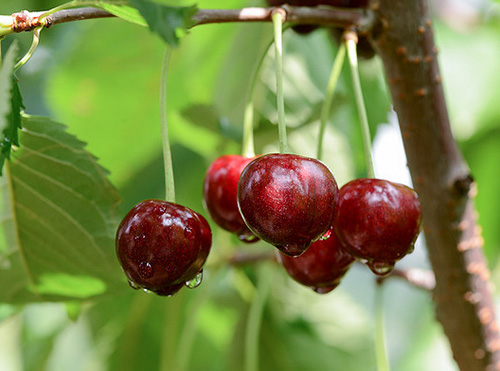
The trees are vigorous (up to 4 - 5 meters high), the crown is raised, wide-pyramidal, medium-leafy. The kidneys are large, vegetative - with an average deviation, cone-shaped, generative - ovoid. Shoots are thick, not pubescent, straight, olive-gray in color. The leaves are large in size, oblong-ovate, with a long-pointed tip and a rounded base, the edge of the leaf with a double-crested serration. The leaf blade is dark green, with a smooth surface, not pubescent, wavy in shape, slightly concave. The petioles are thick, medium or short, pigmented, each with 2-3 large colored glands. Flowers are large in size, in inflorescences collected in 3 - 4 pieces. Petals are white, touching. The corolla is saucer-shaped. The calyx is narrow, glass-shaped. Sepals without serration. The stigma of the pistil is flush with the stamens. The pistil and stamens are long. Fruiting is concentrated on the bouquet branches.

Cherry fruits Iput are outwardly attractive: large size (average berry weight - 5.3 - 6.3 g, maximum - 9.7 g, height - 2.1 cm, width - 2.2 cm, thickness - 2 cm), one-dimensional , blunt-hearted, with a narrow funnel and a rounded apex. The skin is glossy, dark red, with a white dot on the top of the berry; fully ripe fruits become almost black in color. The stalks are thick and short. The abdominal suture is clearly visible. A stone weighing 0.27 g (5.1% of the total weight of the fruit), with a pointed tip, rounded base, ovoid, light brown in color. The separability from the pulp is average. The separation from the stalks is good.
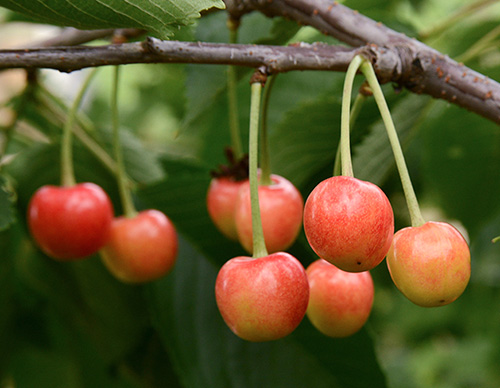
The pulp is juicy, tender, of medium density, dark red in color. The juice is dark red. The taste of the fruit is dessert, sweet, with a subtle bitterness. Tasting score - 4 - 4.5 points. By chemical composition, berries contain: dry matter (15.6 - 16.6%), the amount of sugars (11 - 11.7%), acids (0.5 - 073%), ascorbic acid (11.5 mg / 100 d). By application, the variety is universal.
The level of early maturity is medium: fruiting of sweet cherries begins from 4 to 5 years after planting.
Flowering takes place early. Early ripening (mid-June). The berries grow in small bunches, so they are easy to pick. In wet years, the fruits are partially cracked.
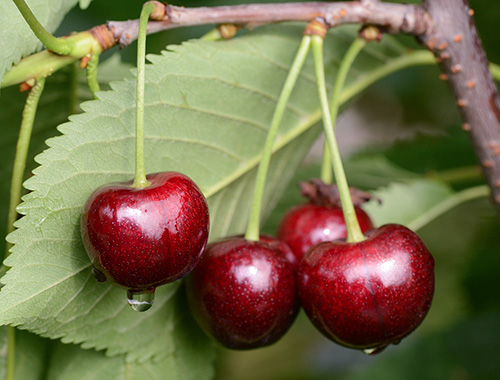
Cherry harvests Iput are regular. The average productivity of the variety is 25 - 30 kg / v. (or 73 kg / ha), maximum yield indicators under favorable conditions and good care - up to 50 kg / der. (or 146 c / ha).
The variety is winter-hardy: after severe winters, the level of freezing of trees did not exceed 0.6 points, the degree of freezing of flower buds - up to 21%, of pistils after spring frosts - up to 60%. Resistance to fungal diseases is high, pests are weakly affected.
The variety is self-fertile. The best pollinators of this sweet cherry include varieties: Bryansk pink, Ovstuzhenka, Raditsa, Revna, Tyutchevka.
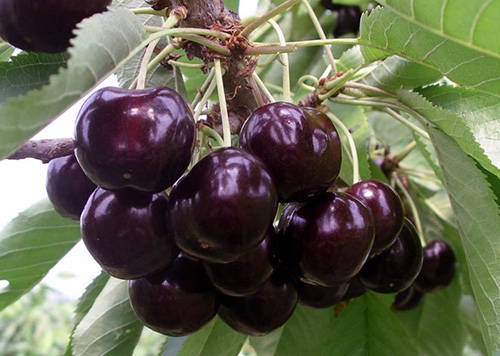
The main advantages of Iput cherries include: beautiful large fruits with dense pulp, early ripening, regular harvests, high winter hardiness of flower buds, good resistance to fungal diseases.
The disadvantages include: rather late onset of fruiting, not too good separation of the pulp from the stone, from an excess of moisture, the berries are partially cracked. Also, gardeners note that unripe fruits taste unsweetened, hard and noticeably bitter.
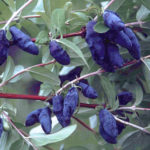
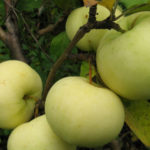
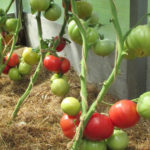
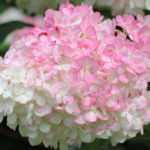
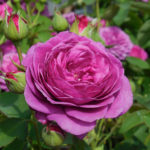
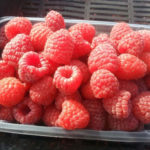



Every year Iput freezes before grafting, grows again, the shoots are more powerful, the leaves are gigantic. The tree is 6 years old, has never bloomed, grows in the Orenburg region. Can you find out why we are so bad? The tree is one.
Purchase a Jeep for pollination. One tree will not bear fruit
I have Iput, one tree grows, it is 7 years old - it has grown higher than the house. I wanted to cut it down, but this year it bloomed for the first time. The flowering was active, but since there is no second pollinator, I sprayed the flowers with an "ovary". The result is excellent, there are many fruits. I will wait for ripening and taste it.
I have Iput, Revna, Bryansk pink. Likewise, every year everyone freezes before vaccination. This winter I ducked the shoots, I'll see what happens. If I will help try to lead trees in stanza form, the question is, is this hassle necessary? I am very interested in how your cherry survived the winter of 2017-18? The winter was mild, but there was very little snow.
It is necessary to cover, tie the trunk with covering material, then build a frame from a tripod and wrap everything again with covering material, you can several times.
Everyone needs a couple for the fetus ...
We have both Iput and Revna growing. Moreover, the five-year-old Iput is already bearing fruit:
https://www.youtube.com/watch?v=8DwtwnEUzcU
Added a video to the article.
I read the reviews and, honestly, I was shocked! Our climate is also not southern, but Iput grows well and bears fruit. And where were the plants that freeze up acquired? Maybe they are not zoned, but from the south? It seems to me that this cherry has a very high frost resistance - it has never been covered or insulated. I do not allow the tree to grow in height - immediately after planting, the central trunk was removed (it is very convenient to harvest large tasty berries from such a low tree). And in order for fruiting to be annual and abundant, one more pollinator variety is needed (we do not have the opportunity to plant a whole tree, we grafted into the crown and one branch was enough for normal pollination). Cherry is resistant to moniliosis - it has never been ill (even in the last cold and damp summer it did not "catch" this infection).
Orenburg. They planted a small twig of Revna. Bought in Chelyabinsk. I spent a great winter.
The tree is the first year after planting. For the winter, the trunk was wrapped in spandbond, since there are strong winds on the site. Now flowers have appeared in the spring. Nearby are three cherries. The winter has wintered well. I hope it will continue to please.))